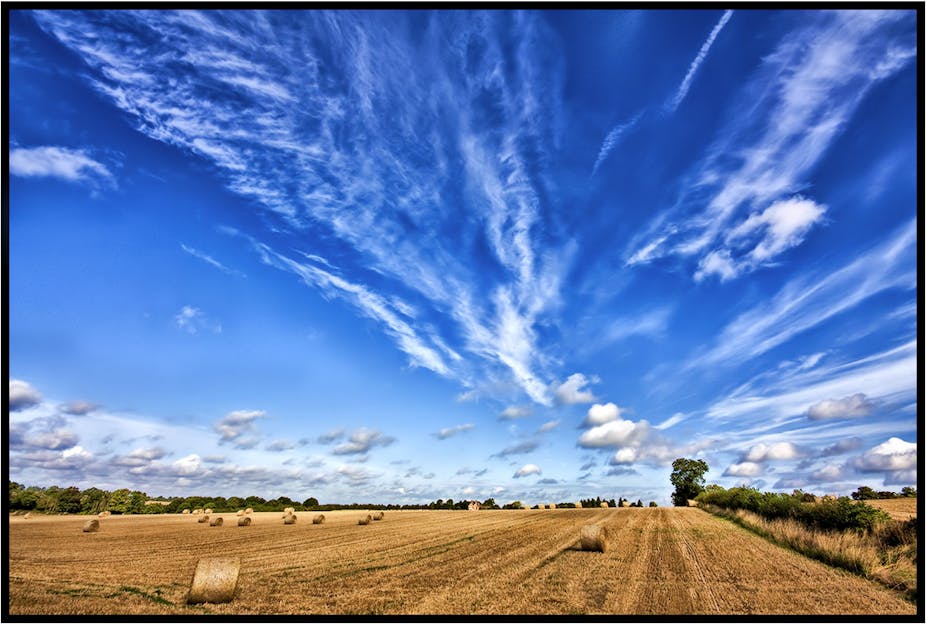In the past six months, it seems something has fallen from the sky every second minute.
In September, the UARS satellite re-entered the Earth’s atmosphere, causing a media frenzy. In October, the German satellite Rosat re-entered, with much less fanfare. Before Christmas, there were reports of space junk falling near Esperance in Western Australia.
And skywatchers were out in droves when the Quadrantid meteor shower put on its annual display earlier this month. Last weekend, the Russian Phobos-Grunt spacecraft, the country’s 19th attempt to reach Mars, plunged back to Earth amid much speculation about the effects of its toxic fuel.
Near Earth Objects
We’re getting used to the idea we’re under continual bombardment from the heavens. But as well as objects from Earth orbit, there are some more sinister things to worry about: the nearly 8,000 identified Near Earth Objects (NEOs), asteroids, comets and meteoroids, whose orbits bring them close enough to Earth for collision to be a real risk. In November last year, the asteroid 2005 YU55 missed the Earth by a mere 300,000km.
So what are we doing about this? At a panel convened last week in Adelaide by the International Space University’s Southern Hemisphere Summer Space Program, experts noted that our knowledge about what’s “out there” has increased exponentially in recent decades. We’ve got a pretty good idea of what is roaming around in the Near Earth environment.
But as they also pointed out, very little is actively being done in the Southern Hemisphere to track and prepare for events such as re-entries.
It wasn’t always this way: until 1996, the Australian government funded a Spaceguard program, which was responsible for identifying one-third of all catalogued NEOs – a very impressive track record. There are currently calls to revive Spaceguard activities, bringing Australia more into line with international efforts. (And in the meantime, it looks as if Australia will participate in talks with the US and Europe to help address the space junk issue.)
Australia is indeed very well placed, in terms of its location, size, expertise and availability of radio-quiet areas, to play an important role in observing and tracking both natural and human-manufactured objects in space. It’s also one of the few countries that has direct experience in what happens when a spacecraft makes an uncontrolled re-entry over land.
In 1979, Skylab, one of the largest spacecraft ever launched at that time, fell out of the sky in flaming fragments over Western Australia. No-one was hurt and there was no property damage, although the Shire of Esperance famously fined the US State Department $400 for littering. (The fine was finally paid in 2009 by public donations).
Hit and miss
The first thing to note is that you would have to be very unlucky indeed to have a piece of space junk fall on you. It’s only happened once that we know of. According to the Centre for Orbital and Reentry Debris Studies (CORDS), Lottie Williams of Oklahoma was hit by a small piece of a Delta II rocket as she was taking a walk one day in 1996. She was unharmed. Similarly, there are no accounts of people being injured by meteorites. There’s just so much ocean, desert and ice – and this is usually where the stuff lands.
Accounts of Skylab’s re-entry, however, can be used to derive some indications about what to expect. Sonic booms typically accompany objects falling at high speed through the upper atmosphere. As with fireworks, these loud noises can upset domestic pets and livestock. Take the same precautions as you would for your pets on New Year’s Eve; there is plenty of information about this online.
Falling meteorites have frequently been blamed for causing fires, and this was also a concern for people in the debris footprint of Skylab. Having an up-to-date fire plan and managing the local risk around your house in terms of available fuel are the best way to prepare for this.
If spacecraft fragments fall near you, don’t rush to collect them. For a start, there may be toxic fuel residues or metals such as beryllium, or radioactive material from power sources and onboard experiments. The most common spacecraft components to survive re-entry are spherical titanium pressure vessels.
Usually regarded as an inert metal, titanium is now thought to have dangerous corrosion products. There are no recorded instances of people falling ill from contact with space junk, but there’s no point taking the risk.
As appealing as the idea of having a personal souvenir of space is, this is not technically junk. Under the terms of the 1967 Outer Space Treaty, the fragments belong to the country which launched the spacecraft. So don’t collect fragments and sell them on eBay – as people may well have done if the internet existed in 1979. (But, if you are really keen, you can still buy tiny pieces of Skylab encased in resin with an authentification certificate today). The pieces can be used to analyse the re-entry event, and perhaps what went wrong with the spacecraft.
If you or your property have been damaged by the spacecraft, you may be entitled to compensation. It will be the responsibility of the appropriate government agency to negotiate what happens next. For most countries, this will be the national space agency. The closest Australia has at the moment is the Space Policy Unit based in Canberra.
Next time you hear that a spacecraft might fall on Australia, don’t be too alarmed. Keep an eye on the predictions, bring your kittens inside, and rejoice in the fact that there is one less object clogging up Earth’s orbit. If you are concerned about NEOs, join those lobbying for the reinstatement of Spaceguard.
It’s not all doom and gloom. The stuff that falls from space reminds us we are part of the cosmos too.

